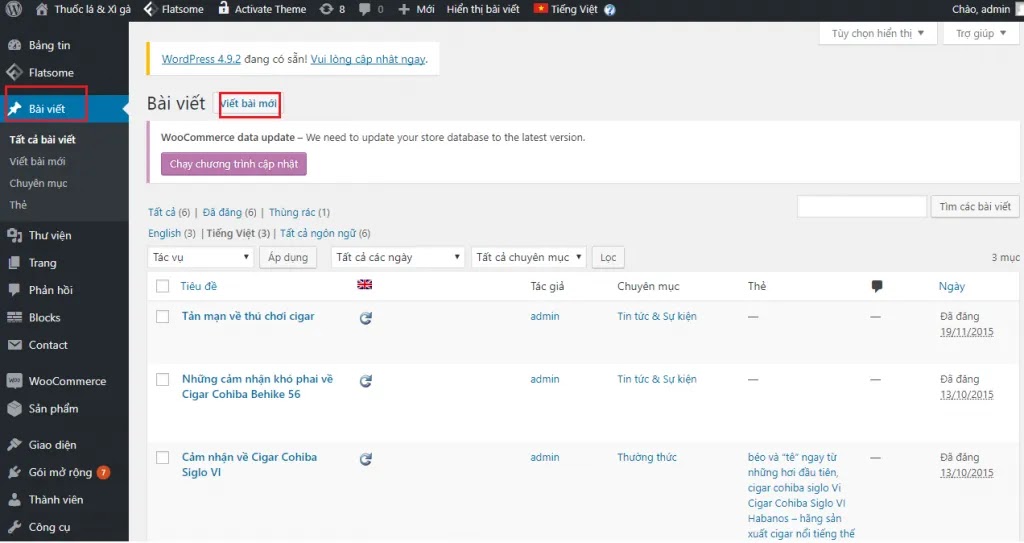Tags in WordPress are an effective way to categorize and organize posts based on specific topics or keywords. Labels help users easily find related articles and improve the content browsing experience. In this article, we will show you how to create and manage post labels in WordPress to optimize content organization.
Step 1: Create Post Labels on WordPress
To create new labels for posts, you can follow these simple steps:
How to Create Labels When Writing New Posts
- Go to the WordPress dashboard and go to Article -> Write new articles.
- On the right side of the screen, under section Labelyou can enter a new label.
- After entering the label, click More. You can add multiple labels to a post by separating them with commas.
- Press Post to save the post and the label will be automatically associated with that post.

Step 2: Manage Post Labels
To manage created labels, you can visit the label management section in your WordPress dashboard. Here, you can edit, delete or add new labels easily.
How to Manage Labels
- Visit Article -> Label in the WordPress dashboard.
- Here you will see a list of all the labels that have been created along with the number of posts using each label.
- To edit a label, hover over the label and click Edit. You can change its label name, slug, and description.
- To remove the label, click Erase. Note that when deleting a label, the related posts will not be deleted, only the label will be removed from the system.
Add New Label From Label Management
- In section Labelenter the new label name in the section Name.
- Fill in the slug for the label if you want. The slug is the version of the label used in the URL (if you leave it blank, WordPress will automatically generate the slug).
- Click Add new label to save.
Step 3: Optimize Post Label Usage
Using labels effectively enhances the findability of content on your website and improves SEO. Here are some tips to optimize label usage:
Don’t Use Too Many Labels
You should not use too many labels for one article, as this can make the website confusing and difficult to manage. Instead, choose labels that are closely related to the content of the article.
Create Labels Related to Content
Each label should accurately reflect the topic of the article. This helps readers easily find articles with similar content and keeps them on the site longer.
Use Labels to Improve SEO
Labels not only help users navigate a website, but can also improve SEO. Tags related to key search keywords can help your articles appear more in search engines.
Tips for Effective Brand Management
- Check for duplicate labels: Make sure you don’t create duplicate or overly similar labels. This helps avoid inconsistent classification.
- Article links with the same label: Use labels to link articles with related content, making it easier for readers to discover more articles.
- Regular reviews: Regularly review your label list and remove unused labels to keep your taxonomy neat and manageable.
Manage WordPress labels
Creating and managing post labels on WordPress helps you organize content scientifically and helps readers easily find related articles. By using labels properly, you can improve user experience, boost SEO, and keep your website organized. Start optimizing your WordPress label usage today to optimize your content and engage your readers!

